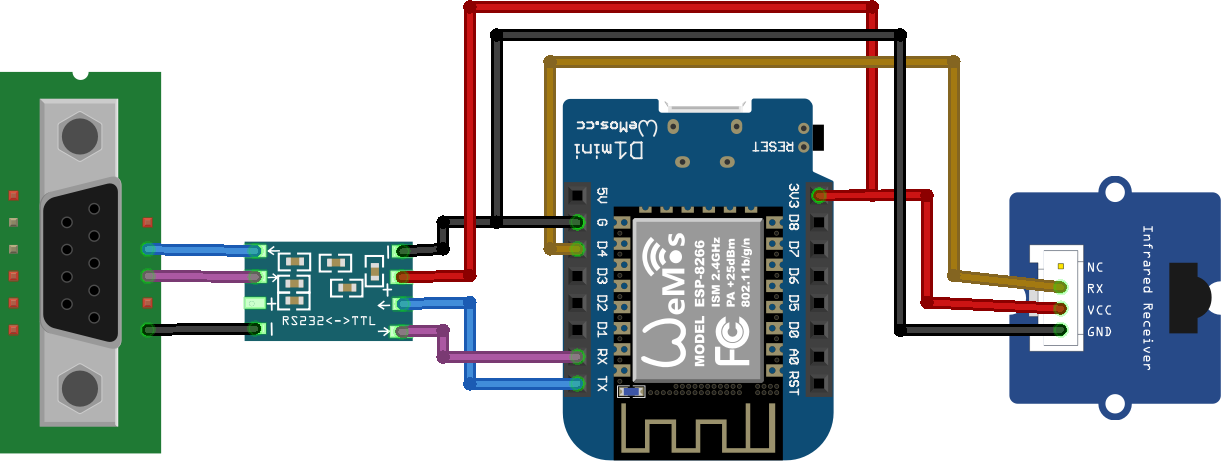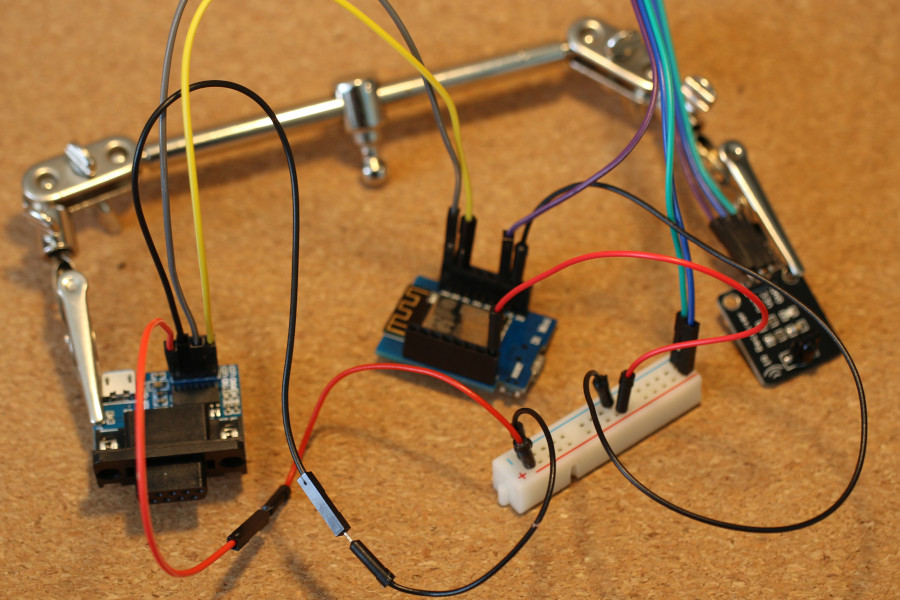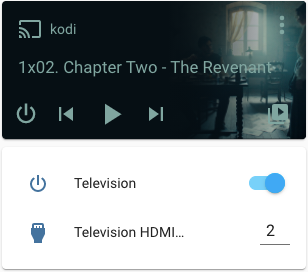With the media center remote now supporting a basic Kodi integration via webservice calls, the next step is to expand it to send RS-232 control codes to a connected television.
The goals of this stage are to:


A subtle but important note is that the RS-232 module is connected to the ESP8266 in "crossover" mode, to simulate a null-modem cable connection.
I'm using an older LG plasma TV, but the control codes found in the LG UV340C instruction manual appear to work on mine. A few codes stand out as being more useful for remote controller:
ka 0 00ka 0 01xb 0 90xb 0 91Highlighting the differences from before, this configuration:
media-center-remote.yaml# ...
uart:
tx_pin: GPIO1
rx_pin: GPIO3
baud_rate: 9600
text_sensor:
# ...
- platform: template
id: command_for_television
internal: true # Do not expose to Home Assistant
on_value:
# Take the value of command_for_television, convert it to a vector and append a \r (carriage return).
- uart.write: !lambda |-
std::vector<uint8_t> command = std::vector<uint8_t>(x.begin(), x.end());
command.push_back('\r');
return command;
switch:
# Allow the television to be switched on and off via Home Assistant
- platform: template
name: "Television"
id: television_on
icon: mdi:power
optimistic: true
on_turn_on:
text_sensor.template.publish:
id: command_for_television
state: "ka 0 01"
on_turn_off:
text_sensor.template.publish:
id: command_for_television
state: "ka 0 00"
number:
# Allow the television HDMI input to be changed via Home Assistant
- platform: template
name: "Television HDMI input"
id: television_hdmi_input
icon: mdi:video-input-hdmi
optimistic: true
min_value: 1
max_value: 4
step: 1
on_value:
- lambda: |-
switch((int) x) {
case 1:
id(command_for_television).publish_state("xb 0 90");
break;
case 2:
id(command_for_television).publish_state("xb 0 91");
break;
case 3:
id(command_for_television).publish_state("xb 0 92");
break;
case 4:
id(command_for_television).publish_state("xb 0 93");
break;
}
remote_receiver:
# ...
on_lg:
# In this lambda, x is an LGData. x.data is a uint32_t that identifies the signal pressed.
- lambda: |-
switch (x.data) {
// ...
case 0x00FF38C7: // 16
id(television_hdmi_input).publish_state(1);
break;
case 0x00FF5AA5: // 17
id(television_hdmi_input).publish_state(2);
break;
// ...
case 0x00FF4AB5: // 19
id(television_on).publish_state(false);
break;
case 0x00FF52AD: // 20
id(television_on).publish_state(true);
break;
// ...
}
Powering up the device and pressing buttons on the remote controller yields logs similar to the following:
...
[17:28:27][D][number:036]: 'Television HDMI input': Sending state 1.000000
[17:28:27][D][text_sensor:015]: 'command_for_television': Sending state 'xb 0 90'
[17:28:35][D][number:036]: 'Television HDMI input': Sending state 2.000000
[17:28:35][D][text_sensor:015]: 'command_for_television': Sending state 'xb 0 91'
[17:28:38][D][switch:045]: 'Television': Sending state OFF
[17:28:38][D][text_sensor:015]: 'command_for_television': Sending state 'ka 0 00'
[17:28:43][D][switch:045]: 'Television': Sending state ON
[17:28:43][D][text_sensor:015]: 'command_for_television': Sending state 'ka 0 01'
Using the intermediary switch and number components in the
configuration allows the values to be updated remotely, such as via Home Assistant. The media center remote device
exposes these two template sensors as controllable entities.

Controlling Kodi is good, but we can go one step further and control the television in Stage 3: Television integration.
This article is part of the Media center remote set. If you have any feedback or questions related to this article, please reply to my post on Twitter.